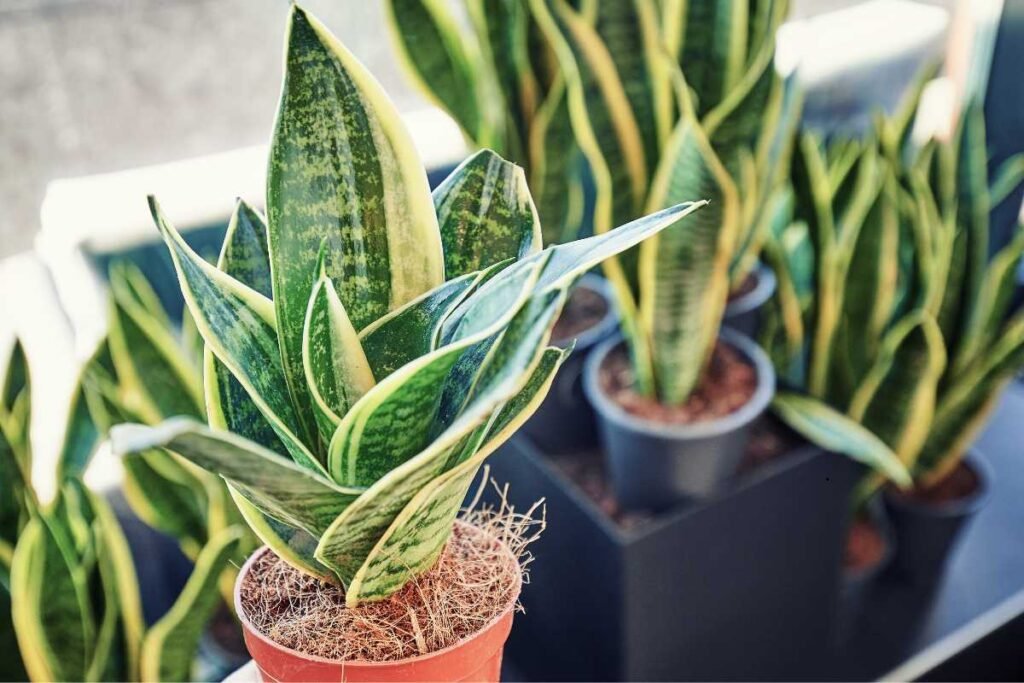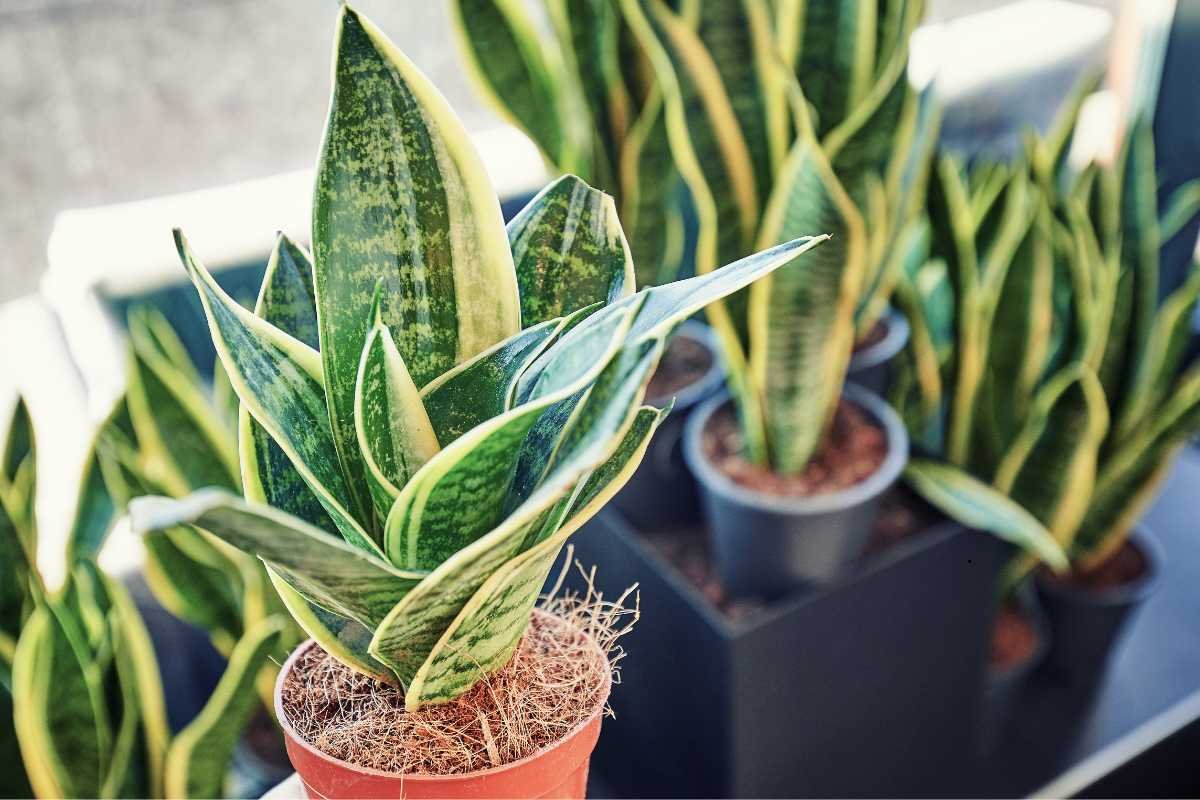Snake plants, also known as Sansevieria or mother-in-law’s tongue, are popular houseplants for their resilience, striking appearance, and ability to purify the air. While snake plants are low-maintenance, proper soil is crucial to their health.
In this comprehensive guide, we’ll explore everything you need to know about the best soil for snake plants, including types, ingredients, drainage, watering habits, and common mistakes to avoid.

Table of Contents
Introduction to Snake Plants
Snake plants belong to the Dracaena genus and are native to tropical West Africa. They’re renowned for their upright, sword-shaped leaves that often come in variegated shades of green and yellow. The plant’s ease of care, ability to survive in low light, and minimal water requirements make it a favorite among both beginner and experienced gardeners.
However, like any plant, snake plants need proper care to thrive. While light and watering habits are often the first factors people consider, soil is equally important. Understanding the right soil for snake plants is the foundation for long-lasting, healthy growth.
Why Soil Matters for Snake Plants
Soil serves as the primary environment in which a plant’s roots live. It provides vital nutrients, water retention, and aeration while also supporting healthy root development.
If the soil doesn’t meet the plant’s specific needs, it can lead to root rot, nutrient deficiencies, or stunted growth. Snake plants are known for their toughness, but improper soil can still cause them to suffer.
The Ideal Snake Plant Soil Composition
Snake plants prefer well-draining soil that prevents water from pooling around the roots. These plants are accustomed to semi-arid environments, meaning they don’t tolerate overly moist conditions. The best soil for snake plants should be:
- Loose and Well-Aerated: Roots need oxygen, and compacted soil can suffocate them.
- Quick Draining: Snake plants are prone to root rot if left in soggy soil.
- Nutrient-Rich: A healthy mix should contain sufficient organic material to feed the plant without becoming waterlogged.
The ideal soil mixture should balance moisture retention with good drainage, allowing the roots to access water when needed while preventing waterlogged conditions.
Drainage and Its Importance
One of the biggest challenges when caring for snake plants is maintaining proper drainage. Overwatering and poor drainage are the most common causes of root rot, which can kill your snake plant if not addressed. To ensure proper drainage:
- Use pots with drainage holes.
- Choose a soil mix that allows excess water to escape quickly.
- Avoid leaving the plant sitting in water-filled saucers.
A key characteristic of snake plants is their ability to store water in their leaves and rhizomes (underground stems). This adaptation helps them survive in dry conditions but makes them highly susceptible to root rot in overly moist environments. Hence, proper drainage in the soil is vital to their survival.
The Role of pH in Snake Plant Soil
Snake plants thrive in slightly acidic to neutral soil, with a pH range of 5.5 to 7.0. Maintaining the right pH ensures that your plant can absorb nutrients effectively. If the pH is too low (acidic) or too high (alkaline), nutrient uptake can be blocked, leading to deficiencies even if the nutrients are present in the soil.
Using a soil pH test kit can help you monitor the acidity or alkalinity of the soil. If the pH is off, you can adjust it by adding substances like lime to raise pH (make it more alkaline) or sulfur to lower it (make it more acidic).
Common Soil Mix Ingredients for Snake Plants
There are various ingredients you can use to create the perfect soil mix for your snake plant. Each component has specific properties that contribute to drainage, aeration, and nutrient availability. Here’s a breakdown of common soil ingredients:
a. Potting Mix vs. Potting Soil
Potting mix is a soilless blend of materials like peat, perlite, and vermiculite, designed to provide good drainage and aeration. Potting soil, on the other hand, may contain actual soil along with organic matter. For snake plants, a potting mix is often preferable because it drains better.
b. Succulent and Cactus Mix
A succulent or cactus mix is one of the best options for snake plants. These premade mixes are formulated to drain quickly and mimic the plant’s natural desert environment. They’re typically made from a combination of coarse sand, perlite, and organic matter, making them ideal for snake plants.
c. Peat Moss
Peat moss is a common organic material used in soil mixes for its ability to retain moisture while still allowing for good drainage. However, peat moss can become compacted over time, so it’s often mixed with other components like perlite or sand to improve aeration.
d. Perlite
Perlite is a volcanic glass that’s been heated until it expands, creating a lightweight, porous material. It helps improve drainage and aeration in soil mixes. Adding perlite to a snake plant’s soil can prevent it from becoming too dense.
e. Sand
Coarse sand is another excellent addition to a snake plant’s soil mix. It improves drainage and helps create the well-draining environment snake plants need. However, avoid using fine sand, which can lead to compaction and poor aeration.
f. Compost and Organic Matter
Compost adds essential nutrients and enhances the water-holding capacity of soil. However, too much compost or organic matter can make the soil too rich and retain too much water, which is detrimental to snake plants. Use organic matter sparingly, ensuring it doesn’t overwhelm the mix’s drainage capabilities.
DIY Soil Mix for Snake Plants
If you prefer to make your own snake plant soil mix, it’s easy to do with a few basic ingredients. A typical DIY mix would include:
- 1 part potting mix or peat moss
- 1 part perlite or coarse sand
- 1 part succulent/cactus mix
This combination ensures good drainage while retaining just enough moisture to keep your plant hydrated without risking waterlogging.
You can customize this mixture further by adding other materials like small amounts of compost or coco coir for added nutrition and water retention. However, always prioritize drainage in any mix you create.
How to Choose Commercial Potting Soil for Snake Plants
Many commercial potting soils are formulated for a wide range of plants, but not all are suitable for snake plants. When selecting a potting soil:
- Look for blends labeled as “succulent” or “cactus” soil, as these are designed for fast drainage.
- Avoid soils that contain too much peat moss or compost, as these can retain too much water.
- Consider supplementing commercial mixes with additional sand or perlite if you find that the soil is holding water for too long.
Watering and Soil Interaction
Watering habits directly impact how soil behaves in a snake plant’s pot. Snake plants prefer to dry out between waterings, so choosing a fast-draining soil helps to prevent overwatering. Here’s a watering guide based on soil conditions:
- Well-Draining Soil: Water thoroughly, but allow the soil to dry out before watering again. Stick your finger into the soil; if the top 1-2 inches are dry, it’s time to water.
- Heavy or Compact Soil: Be cautious when watering, as heavy soils retain moisture longer. This increases the risk of root rot, so make sure to let the soil dry out well between waterings.
Remember, snake plants don’t need much water, especially during the winter when their growth slows down. Overwatering is one of the most common mistakes that can lead to soil becoming waterlogged and unhealthy.
Repotting Snake Plants: When and How to Do It
Snake plants can grow slowly, but they eventually outgrow their pots. Repotting is necessary to refresh the soil, provide more space, and prevent the roots from becoming bound. Repotting typically should be done every 2-3 years, or when:
- The plant becomes root-bound and outgrows its pot.
- The soil has compacted and no longer drains well.
- You see signs of poor health, such as yellowing leaves, that could be related to the soil.
To repot a snake plant:
- Choose a Slightly Larger Pot: Only move up one pot size at a time, as too large a pot can increase the risk of overwatering.
- Prepare Fresh Soil: Use a well-draining potting mix designed for succulents or make your own (as described earlier).
- Repot Gently: Remove the plant carefully, loosen the roots, and place it in the new pot with fresh soil around the edges.
Common Soil-Related Problems with Snake Plants
Even with the right soil, snake plants can experience problems if not properly cared for. Some common issues include:
a. Root Rot
Root rot is the most significant risk for snake plants. It’s caused by overwatering or poor drainage. If the roots stay too wet for too long, they start to rot, which can eventually kill the plant. Signs include wilting, yellowing leaves, and mushy roots.
b. Compacted Soil
If the soil becomes too compacted over time, it can restrict airflow to the roots, which leads to poor health. Compacted soil can also retain too much water, creating the same risks as overwatering.
c. Nutrient Deficiency
Snake plants don’t require heavy feeding, but if the soil lacks essential nutrients, they may suffer from slow growth, pale leaves, or yellowing. Refreshing the soil occasionally or using a balanced, low-nitrogen fertilizer can help maintain proper nutrition levels.
Final Thoughts and Recommendations
Snake plants are remarkably resilient, but like any plant, they have specific needs when it comes to soil. Ensuring your snake plant has well-draining, loose, and nutrient-rich soil can make all the difference in its long-term health.
Whether you choose a commercial mix or create your own, understanding the role of ingredients like perlite, sand, and organic matter will help you provide the perfect environment for your plant to thrive.
Key Takeaways:
- Prioritize drainage to avoid overwatering and root rot.
- Use a succulent or cactus mix, or create your own soil blend with ingredients like perlite and sand.
- Monitor soil pH and make adjustments if necessary to ensure optimal nutrient uptake.
- Repot snake plants every 2-3 years to refresh the soil and give the roots more space to grow.
By understanding the right soil mix and how it interacts with your snake plant’s needs, you’ll be able to grow a healthy, happy plant that beautifies your home for years to come.
My name is Shahriar Robin, and my journey with plants began in childhood, igniting a lifelong passion that blossomed alongside my career as a nutritionist and sports trainer. Through SnakePlant.org, I channel this dedication, merging expertise from nutrition and sports training to nurture a platform sharing all-encompassing knowledge about Snake plants. This website mirrors my commitment to cultivating greenery, offering comprehensive insights on growth, maintenance, and nurturing practices for these captivating plants. My mission is rooted in leveraging diverse expertise to enhance plant care practices, believing profoundly in the therapeutic impact of nature. Join me on SnakePlant.org, where I unite a thriving community of enthusiasts, sharing experiences, insights, and the profound joys of planting.

